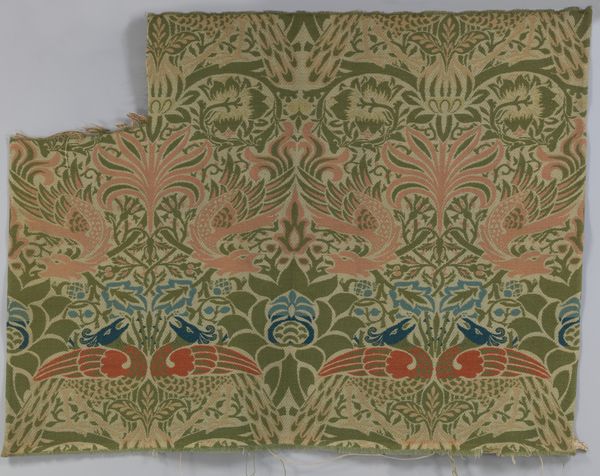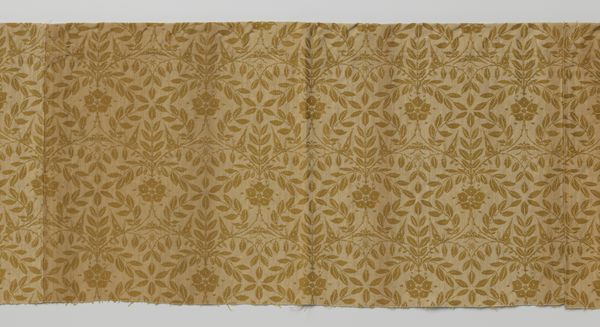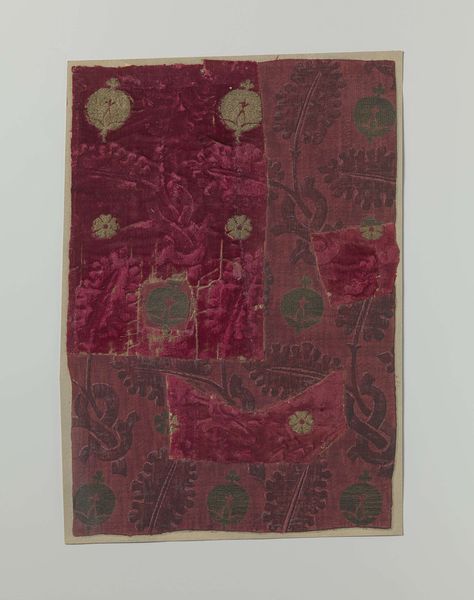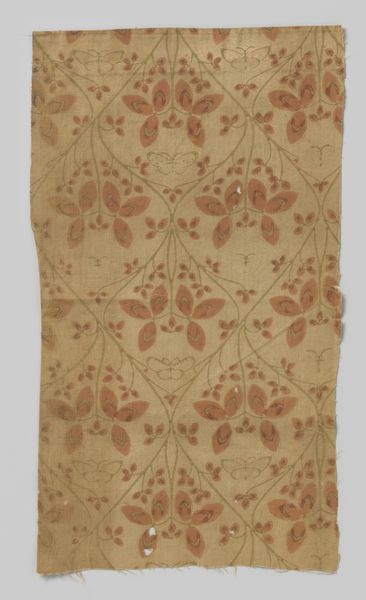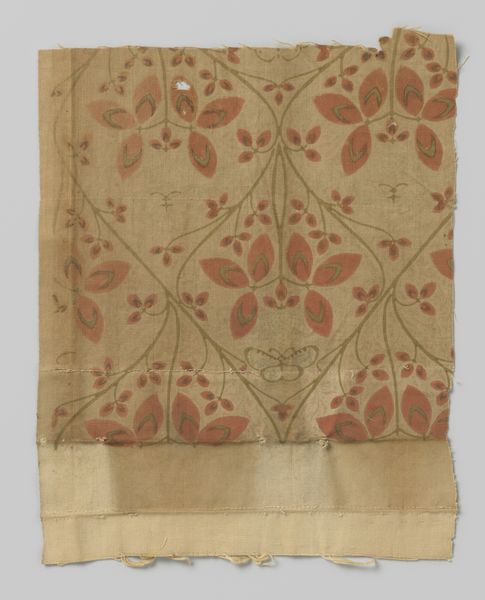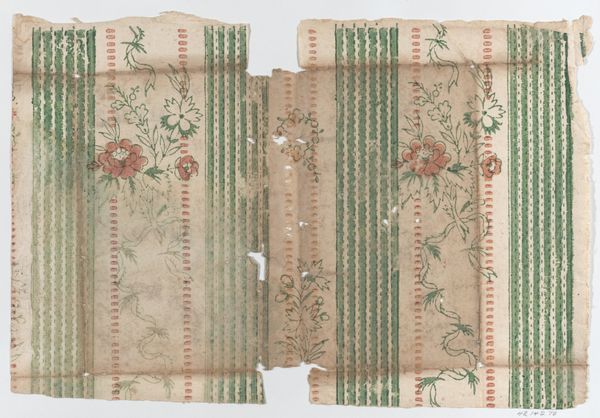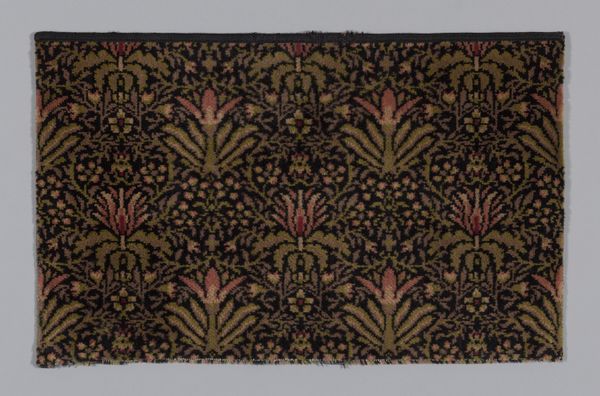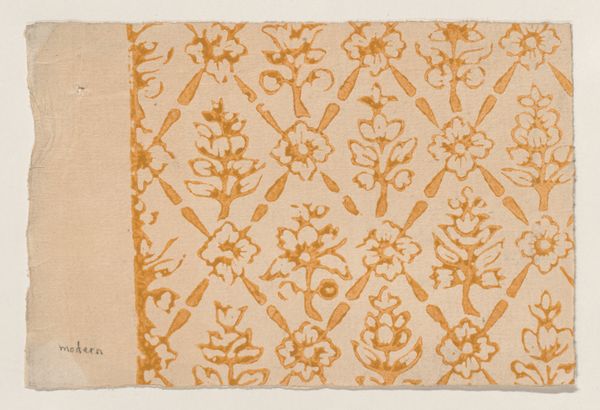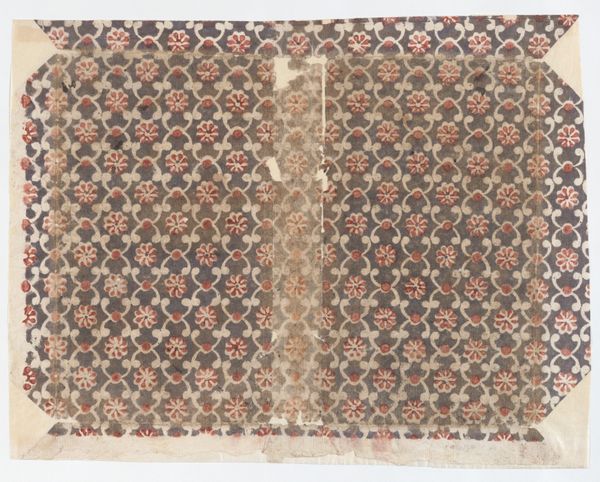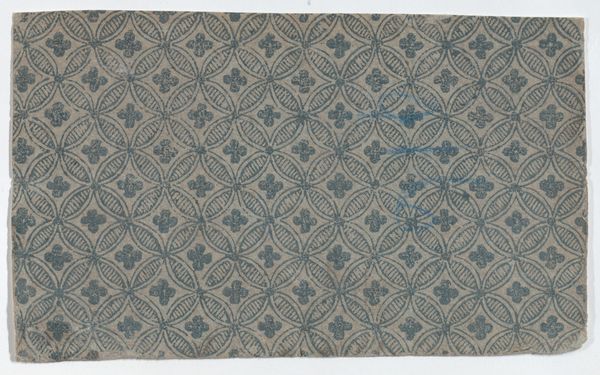
fibre-art, weaving, textile
#
fibre-art
#
medieval
#
weaving
#
textile
#
coloured pencil
Dimensions: height 35 cm, width 21 cm
Copyright: Rijks Museum: Open Domain
Editor: This is a Fragment of Silk Fabric, dating from about 1300 to 1904 by an anonymous artist. It's incredible to see how this textile, even fragmented, carries such intricate woven details and faded grandeur. How do you approach a piece like this, especially considering its age and fragmentary nature? Curator: We must center our analysis on the process of its creation. Consider the labor involved in weaving such fine silk. Who produced this? Where? What were the social conditions surrounding its production and likely consumption? The material itself – silk – speaks volumes about trade routes and access to luxury goods. How might the original context of this fabric—perhaps as part of a larger garment or furnishing—impact our understanding of its value and function? Editor: It's easy to see it as a beautiful object, detached from its original use. Are you suggesting we should be thinking more about the conditions of its making? Curator: Precisely. Look closely at the weave. Is it a simple structure, or complex? Dyes came from specific resources, what can the colored threads suggest about the economic exchange? How does understanding the methods of production challenge the art world’s established notions about fine art versus craft? Consider the concept of ‘fibre art’ as a conscious reclaiming of craft traditions. The fragment suggests that we should re-evaluate the hierarchical definition of art. Editor: So, beyond the aesthetic qualities, we delve into the socioeconomic factors of its creation... the value lies in the labor, the resources, the historical context all embedded within the object? Curator: Absolutely. What we have here isn’t simply a decorative textile; it's a material record of medieval labor practices, trade, and consumption. Looking closely helps unravel the intricate networks of its creation. Editor: That's a perspective shift! Now I see this fragile piece carrying more meaning as evidence, challenging typical art classifications. Thanks. Curator: My pleasure! It's essential to look at how the making informs meaning.
Comments
No comments
Be the first to comment and join the conversation on the ultimate creative platform.
